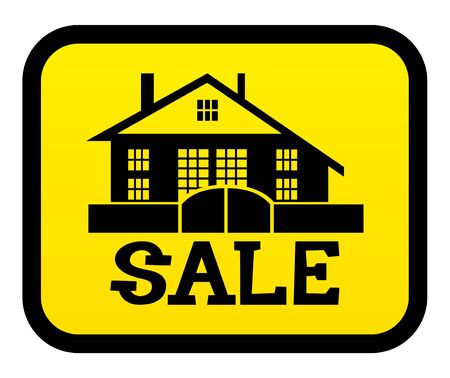Understanding Seasonal Trends in the U.S. Housing Market
When it comes to selling your home for maximum profit, timing is everything. In the United States, the housing market follows distinct seasonal trends that can have a big impact on how quickly your home sells and at what price. To make the most of these fluctuations, it’s important to understand what drives them. One major factor is the school calendar; many families prefer to move during the summer months to avoid disrupting their childrens education, which typically means higher demand—and often higher prices—during late spring and early summer. Weather also plays a significant role: in colder regions, home sales tend to slow down in winter due to harsh conditions, while warmer climates may see more consistent activity year-round. Additionally, holidays like Thanksgiving and Christmas often cause buyers and sellers alike to put off moving decisions until after the New Year, leading to slower markets during those periods. By being aware of these seasonal patterns, you can plan your sale for a time when demand is highest, giving yourself the best shot at maximizing your profit.
Spring and Early Summer: The Seller’s Prime Time
When it comes to timing your home sale for maximum profit, spring and early summer are widely regarded as the sweet spot in the U.S. real estate market. This period, typically stretching from March through June, brings a surge of buyer activity and can lead to more competitive offers compared to other times of the year. But why exactly do these months work so well for sellers?
First, families with children often want to move during the summer break, making spring the perfect time to start house hunting. The pleasant weather also makes it easier for buyers to tour homes and envision themselves enjoying outdoor spaces, which boosts emotional appeal and can translate into higher offers. Additionally, homes naturally look their best in spring—with blooming gardens and longer daylight hours enhancing curb appeal.
Buyer competition is another key factor. With more buyers actively searching, sellers may receive multiple offers, sometimes driving up the final sale price. Real estate agents also tend to recommend listing in this window because data consistently shows shorter days on market and higher sale-to-list price ratios.
| Season | Average Days on Market | Sale-to-List Price Ratio |
|---|---|---|
| Spring (Mar–May) | 30–45 days | 98%–102% |
| Early Summer (Jun) | 35–50 days | 97%–101% |
| Fall/Winter | 55–70 days | 95%–99% |
This table demonstrates that homes listed in spring and early summer typically sell faster and closer to (or above) asking price than those listed later in the year. Ultimately, if your goal is to maximize profit and minimize time on market, aiming for a spring or early summer listing gives you a clear advantage in most American markets.

3. What to Expect When Selling in Fall and Winter
When considering the best time to sell your home for maximum profit, it’s important to take a close look at the unique dynamics of fall and winter. These off-peak seasons can present both challenges and opportunities for sellers, so understanding what to expect is key to making smart pricing decisions that fit your financial goals.
Pros: Reduced Competition and Serious Buyers
One major advantage of listing your home during fall or winter is reduced competition. Since many homeowners wait until spring or summer to put their properties on the market, your home will likely stand out more with fewer listings to compete against. This scarcity can attract buyers who are motivated and ready to make a decision quickly—such as families relocating for work before the new year or individuals looking to take advantage of end-of-year tax benefits.
Potential for Faster Transactions
With fewer homes available, buyers tend to be more serious and decisive. This can often lead to quicker negotiations and smoother transactions, which is ideal if you have a tight timeline or want to avoid the stress of a prolonged selling process.
Cons: Fewer Buyers in the Market
The main downside of selling in fall or winter is that buyer activity generally slows down after summer. Many potential buyers prefer not to move during the holiday season or colder months, which means your pool of interested parties may be smaller. This could lead to longer days on market and potentially lower offers, especially if your home isn’t priced competitively or lacks strong curb appeal during dreary weather.
Pricing Strategies Matter More Than Ever
Because there are fewer buyers actively shopping in the off-season, setting the right price becomes even more critical. Overpricing could scare away the limited buyer pool, while strategic pricing that reflects local demand can help you capture attention and encourage competitive offers. In some markets, you might also consider offering incentives like covering closing costs or providing flexible move-in dates to entice buyers who are on the fence.
Budgeting for Seasonal Differences
If you do choose to sell in fall or winter, it’s wise to budget for possible longer holding costs or minor updates—like improving lighting or staging with cozy touches—to make your home feel warm and inviting despite the season. Understanding these pros and cons will help you develop a seasonal pricing strategy that maximizes your profit while minimizing stress throughout the selling process.
4. Regional Differences: Why Timing May Vary Across the U.S.
When it comes to seasonal pricing strategies, one size doesn’t fit all—especially in a country as diverse as the United States. The best time to sell your home for maximum profit can vary greatly depending on where you live. Local climate, economic trends, and even cultural customs all play a major role in shaping the real estate market’s seasonality. Here’s what homeowners should consider before setting their selling timeline:
Climate: Weather Impacts Buyer Behavior
In regions with harsh winters like the Midwest and Northeast, buyers tend to be more active in spring and summer when moving is easier and properties show better curb appeal. Meanwhile, in warmer states like Florida or Arizona, winter months often see an influx of buyers—especially retirees and “snowbirds”—who want to escape colder climates. This means your region’s weather can directly influence when demand peaks in your local market.
Local Economy: Job Markets and Industry Cycles
The strength and timing of the local economy also affect when homes sell best. Cities driven by tourism may see hot selling seasons that coincide with peak travel times, while college towns might experience increased activity around graduation or before the fall semester starts. Areas dependent on agriculture might even have unique selling windows tied to harvest seasons. Understanding your area’s economic calendar can help you pinpoint the most profitable time to list your property.
Regional Customs: Community Habits and Traditions
Cultural norms can dictate preferred moving seasons too. For example, many families prefer to move during summer break to avoid disrupting school schedules—a trend especially strong in suburban communities nationwide. In contrast, urban areas with a high concentration of young professionals may not follow the same pattern, with steady demand throughout the year.
Comparing Regional Selling Seasons
| Region | Peak Selling Season | Main Influencing Factors |
|---|---|---|
| Northeast & Midwest | Spring/Summer | Weather, School Calendar |
| Southeast & Southwest | Winter/Early Spring | Climate (Snowbirds), Tourism |
| West Coast | Late Spring/Summer | Mild Weather Year-round, Tech Industry Cycles |
| College Towns Nationwide | Late Spring/Early Fall | Academic Calendar, Student Moves |
Key Takeaway for Sellers:
The best time to sell isn’t just about national averages—it’s about understanding what drives buyer activity in your specific region. Taking into account climate, economic cycles, and community habits will help you tailor your strategy for maximum profit.
Budgeting for Seasonal Costs and Preparing Your Home
Understanding Seasonal Expenses
When planning to sell your home, recognizing how costs shift with the seasons is essential for maximizing your profit. Each season brings its own set of expenses that can impact your bottom line, so creating a budget tailored to your timeline will help you stay on track.
Spring and Summer: Landscaping and Curb Appeal
During spring and summer, buyers are drawn to lush yards and vibrant gardens. Expect higher landscaping costs—mowing, planting flowers, mulching, and tree trimming can add up quickly. Budget for fresh paint or minor exterior repairs, since great curb appeal makes a strong first impression in these competitive selling months.
Fall: Maintenance and Staging
In the fall, you may spend less on landscaping but more on cleanup—think leaf removal, gutter cleaning, and prepping outdoor areas. Inside, staging your home with warm colors and cozy textures helps buyers imagine themselves living there as cooler weather sets in. Allocate funds for professional cleaning and updating décor to match the season.
Winter: Heating and Utility Efficiency
Selling in winter means making your home feel inviting despite chilly temperatures. Budget for higher heating bills to keep the house comfortable during showings. Consider investing in energy-efficient upgrades like weather-stripping or smart thermostats—these features attract buyers concerned about utility costs. Also, be prepared for potential snow removal or ice management if you’re in colder climates.
Steps to Maximize Home Appeal Year-Round
Focus on Cleanliness and Repairs
No matter when you list, a spotless and well-maintained home stands out. Schedule regular deep cleans, fix leaky faucets or squeaky doors, and address any visible wear-and-tear before putting your home on the market.
Stage According to Season
Adapt your staging efforts to highlight seasonal benefits—light airy spaces in summer or a cozy fireplace setting in winter. Even small touches like fresh flowers in spring or tasteful autumn wreaths can make a big difference.
Plan Your Budget Ahead of Time
Create a spreadsheet that lists anticipated seasonal expenses alongside your selling timeline. Factor in both must-have improvements and optional upgrades so you can prioritize based on your goals—and maximize your final profit no matter when you decide to sell.
Timing Your Sale for Maximum Profit
When it comes to maximizing profit from your home sale, timing is everything. While national trends can provide a general roadmap, the best listing date often depends on a combination of local market data and your personal financial goals. Here are some actionable strategies to help you make the most informed decision.
Analyze Local Market Data
Start by researching recent sales in your neighborhood. Check how long homes are staying on the market and whether properties are selling above or below asking price. Most real estate websites, such as Zillow or Realtor.com, offer tools that track these metrics over time. If you notice a spike in buyer activity during certain months—like spring or early summer—that’s a strong indicator those seasons might yield higher offers.
Tip: Consult a Real Estate Agent
An experienced agent can provide hyper-local data, including insights about bidding wars and buyer demand specific to your ZIP code. They can also advise you if an upcoming change in mortgage rates or local development projects could impact your timing.
Align with Your Financial Goals
Your personal circumstances should factor into your decision just as much as the market does. For example, if you’re relocating for a new job or need cash to fund another investment, you may need to balance speed with price. If your goal is purely profit maximization and you have flexibility, waiting for peak buying seasons—even if that means holding onto your property a few extra months—could be worth it.
Consider Tax Implications and Closing Costs
If you’re nearing the end of a tax year, consult with a financial advisor to see how the timing of your sale might affect your tax liability. Also, keep in mind seasonal fluctuations in closing costs based on demand for inspectors, movers, and contractors.
Coordinate the Logistics
A strategic timeline involves more than just picking the “right” month. Prepare your home ahead of time so it’s ready to shine when buyer interest is highest. This includes scheduling repairs, staging, professional photos, and marketing well in advance of your ideal listing date.
Final Thoughts
The best time to sell isn’t just about what’s happening in the broader housing market—it’s about what works for you financially and logistically. By combining up-to-date market research with thoughtful planning around your own needs, you’ll be positioned to maximize both your sale price and peace of mind.


